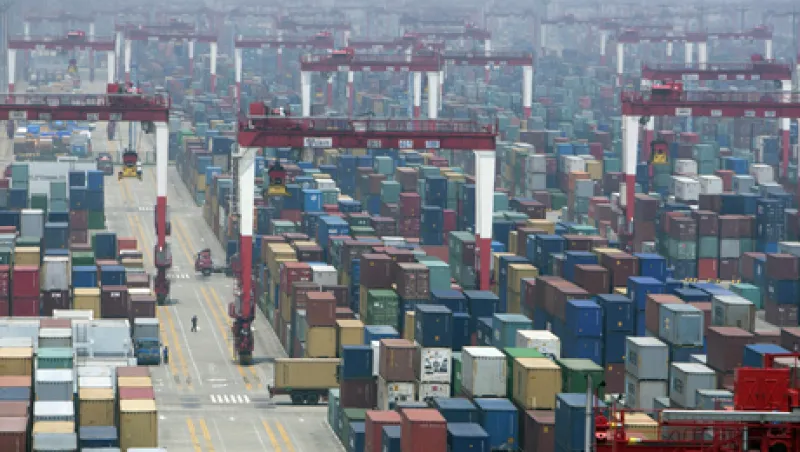Chinese exports have slumped, contributing to an awkward slowdown in economic growth that comes precisely as the political leadership is keen to keep output powering ahead.
The increase in exports, an important driver of the overall economy, has dropped from 11.3 percent year on year in June to only 1 percent in July, according to official figures published Friday -- the lowest in six months. They were hit by a 16 percent slide in exports to the EU, where the euro zone debt crisis has damaged demand. Wei Yao, China economist at Société Générale in Hong Kong, said: “The hope that external demand will underpin China’s economy is ever more diminished.”
The news will encourage the government to continue cutting interest rates to stimulate the economy. The central bank’s benchmark one-year lending rate has already been trimmed by 56 basis points (bp) to 6 percent since June -- continuing the government’s well-established record of acting pre-emptively to counteract slowdowns. Several analysts predict another reduction soon. The government is likely to be encouraged further into easing monetary policy by two sets of number published on Friday: export figures and numbers showing a fall in net new loans issued by Chinese banks to a 10-month low of 540 billion renminbi.
However, the question of how much to pump prime the economy puts the government in a dilemma.
There is considerable political pressure for it to deliver a strong kick to output. Chinese gross domestic product growth of 7.6 percent year on year in the second quarter is the kind of number which developed western economies could only dream of, but the Chinese government regards 8 percent as a key number below which there is greater danger of social unrest. Both independent analysts and some government figures believe slow growth in the late 1980s was a contributing factor to the 1989 Tiananmen Square protests. The 7.6 percent figure was the lowest for three years as China struggled to respond to slowing global demand.
On top of this consideration, the Chinese government wants robust economic expansion at what it regards as a politically potentially fragile time: the once-in-a-decade change in leadership at the top ranks of the party. The new members of the politburo standing committee, the small group of men that rules China, will be chosen in October and take office in November.
Hopes that this process would run smoothly were dashed by this year’s macabre political scandal involving Bo Xilai, an ambitious politician with a strong personal following who had been seen as a likely candidate for the new standing committee. Bo was removed from his post as Chongqing party boss for “severe discipline violations.” On Thursday his wife, Gu Kailai, was accused by prosecutors of being the “main perpetrator” in the murder of Neil Heywood, a British business associate. The fall from grace of Bo and his wife has provoked potentially destabilizing public criticism about corruption in China’s political class, although the exact facts of the matter are not clear or ever likely to be.
The Chinese leadership’s heightened fears about social and political stability will make it all the more tempting to sanction a resort to their tried and tested methods for generating economic growth, including cutting interest rates and allowing the multifarious arms of the government to boost public investment.
Public investment plays an unusually key role in keeping the Chinese economy afloat, because consumer spending is so weak. Household consumption accounts for only about 35 percent of gross domestic product while investment is about 50 percent -- an extremely high figure compared with developed economies.
But although investment provides a short-term stimulus to economic expansion by boosting construction spending and providing work for millions of people the central government’s political leaders are aware that much of it is wasteful -- largely because there is too much money chasing too few worthwhile opportunities. The year-old 42.5km Qingdao sea bridge, the longest in the world, has become the most flagrant and most embarrassing example: it carries 10,000 vehicles a day compared with capacity of 30,000.
Responding to this situation, central government is keen to create a better balance between investment and consumer spending -- prompted also by concerns that despite China’s rapid growth in recent years the quality and breadth of many consumer services remains unsatisfactory. However, this ambitious project is likely to take years. Meanwhile, the Chinese authorities will feel the need to respond to signs of economic weakness through the twin-track approach of boosting public investment as well as cutting interest rates -- suggesting continuing strong income opportunities for the large number of listed Chinese construction companies that have benefited from the infrastructure boom.
The Shanghai Composite stock index inched down by 0.2 percent to 2,169 on Friday, with sentiment depressed by the news on exports and loans.






